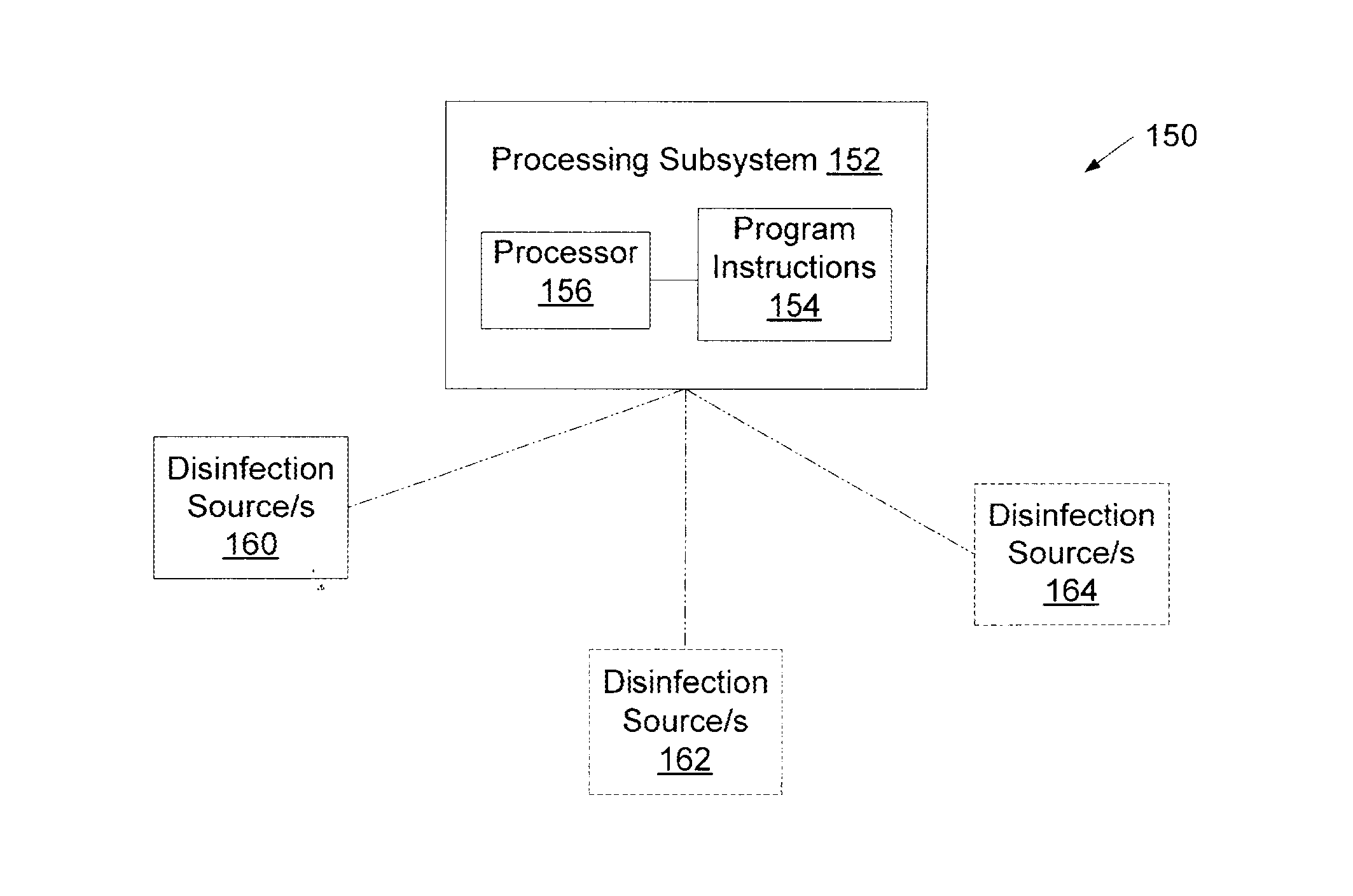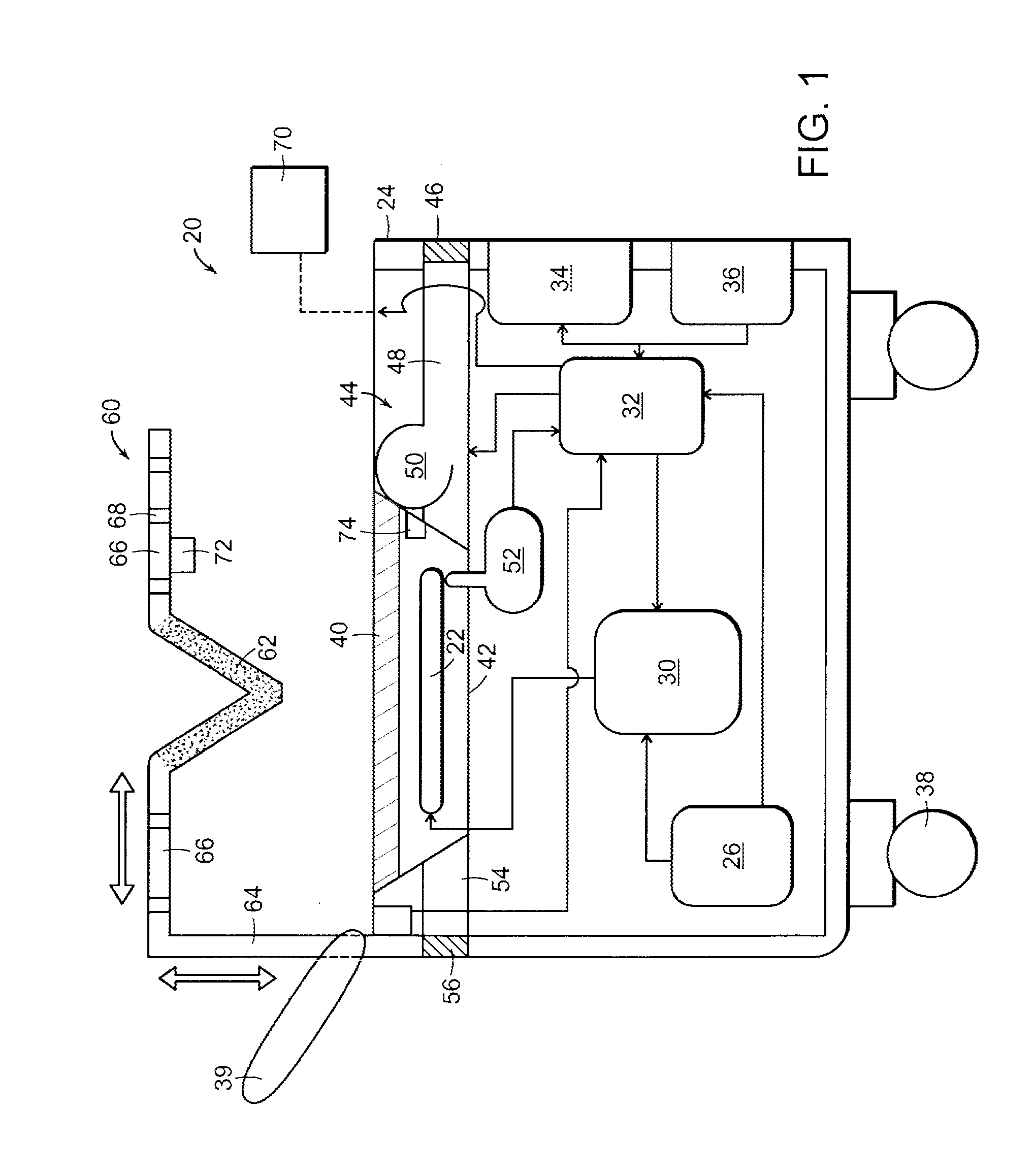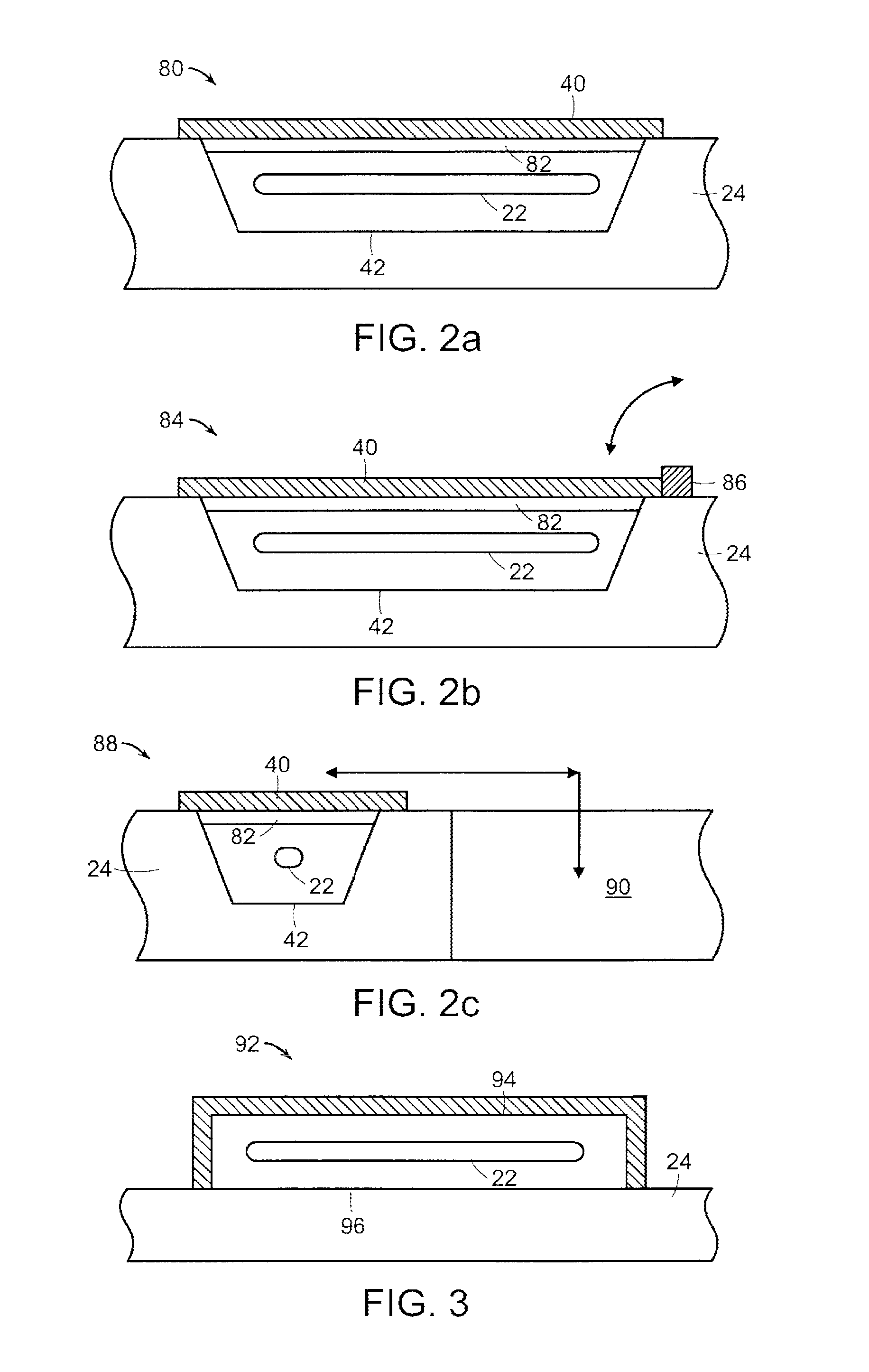Systems which Determine Operating Parameters and Disinfection Schedules for Germicidal Devices and Germicidal Lamp Apparatuses Including Lens Systems
a technology of operating parameters and disinfection schedules, which is applied in the field of germicidal devices, can solve the problems of wasting time and/or energy, difficult to treat, and many conventional room/area decontamination systems are limited
- Summary
- Abstract
- Description
- Claims
- Application Information
AI Technical Summary
Benefits of technology
Problems solved by technology
Method used
Image
Examples
Embodiment Construction
[0036]Turning to the drawings, exemplary embodiments of discharge lamp apparatuses are provided. More specifically, exemplary configurations of apparatuses are shown in FIGS. 1-3 having a discharge lamp arranged lengthwise parallel to a plane of the apparatus at which the lamp is supported (hereinafter referred to as a “horizontally positioned lamp”). In addition, exemplary configurations of apparatuses are shown in FIGS. 4-8 having a discharge lamp arranged lengthwise perpendicular to a plane of the apparatus at which the lamp is supported (hereinafter referred to as a “vertically positioned lamp”). In addition, a system having two discharge lamp apparatuses is shown in FIG. 9. As will be set forth in more detail below, the apparatuses and features described herein are not limited to the depictions in the drawings, including that the discharge lamps are not restricted to “horizontal” and “vertical” positions. Furthermore, it is noted that the drawings are not necessarily drawn to s...
PUM
 Login to View More
Login to View More Abstract
Description
Claims
Application Information
 Login to View More
Login to View More - R&D
- Intellectual Property
- Life Sciences
- Materials
- Tech Scout
- Unparalleled Data Quality
- Higher Quality Content
- 60% Fewer Hallucinations
Browse by: Latest US Patents, China's latest patents, Technical Efficacy Thesaurus, Application Domain, Technology Topic, Popular Technical Reports.
© 2025 PatSnap. All rights reserved.Legal|Privacy policy|Modern Slavery Act Transparency Statement|Sitemap|About US| Contact US: help@patsnap.com



